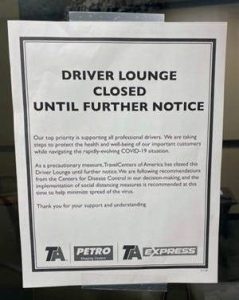In honor of Memorial Day, the team at Infinit-I Workforce Solutions would like to thank all members of our armed services. We stand with you.
We express our sincere gratitude to the ones who are no longer with us; the heroes who made the ultimate sacrifice so that we may be free.
Thank you for your service.

Also, a huge thank you to all the truck drivers over the road who spend countless hours away from their family and friends to support their fellow Americans. You are the backbone of the supply chain.
Memorial Day weekend poses a higher risk for truckers because of road construction, the influx of traffic, and increased fatality rate.
Road Construction
Not only are traffic fines increased in construction zones, so is the risk of fatal accidents. In fact, a whole week in April is dedicated to raising awareness because construction zones are so dangerous.
State DOTs, road safety organizations, government agencies, and private companies come together every year to present National Work Zone Awareness Week. Their goal is to save lives, reminding all drivers to use caution, especially when encountering work zones.
In 2018, 34% of fatal work zone related crashes involved the death of a professional driver. Often, preventable actions cause these crashes such as improper following distance, distracted driving, excessive speeds, etc.

The confusion and frustration that exists in construction zones is normal for truck drivers. They encounter work zones frequently due to the nature of their job.
Keep in mind, four-wheelers are responsible for most CMV accidents. The truck driver and/or the company can still be taken to court, however, even though it’s not their fault.
Influx of traffic
As the summer begins, Memorial Day kicks off road trips, family vacations, and parties. We’ve all been stuck at home, slowly going stir crazy. Shelter in place recommendations have been relaxed as we enter a long-awaited 3-day weekend.
While the rest of the country practiced social distancing, truck drivers got used to less traffic Drivers have been able to drive faster and deliver loads in a shorter amount of time.
Truckers need to be mindful that this weekend will bring people out of their homes. They will see a large increase in the amount of commuter traffic all over the country.
Increased Fatality Rate
Even though traffic has decreased over the past few months, motor vehicle fatality rates have gone up. The National Safety Council says the United States has seen a 14% increase in the number of fatal accidents since the quarantines started.
All drivers are taking advantage of the less congested roadways. Average speeds have increased, and as a result, this careless driving has caused more accidents.
Some states have seen massive increases in the number of driving fatalities. Arkansas’s number has increased by 16% compared to last year. Louisiana has experienced a 23% increase and Connecticut’s number skyrocketed by 42%.
“Disturbingly, we have open lanes of traffic and an apparent open season on reckless driving,”
Lorraine M. Martin, President and CEO of NSC encourages everyone to drive with caution, especially during the pandemic and crisis. She says driving safely is our civic duty.
“If we won’t do it for ourselves, we should do it for our first responders, our law enforcement and our healthcare workers, who are rightly focused on coronavirus patients and should not be overwhelmed by preventable car crashes.”
– Lorraine M. Martin, NSC president and CEO.

Experts’ Advice
The expert advisory board of Infinit-I Workforce Solutions has advice for trucking companies who are concerned about the health of their company. They have recommended the following best practices to ensure the safety of highways, truck drivers, and the general public:
Create a ‘first-in-class’ safety culture.
The goal of every safety department is to reduce accidents, reduce CSA, and ensure safety is always ‘top-of-mind’ for all employees. The best way to achieve this goal is consistent communication and frequent training.
Offer your truck drivers continual safety training.
One of the main challenges in the trucking industry is routing drivers to the terminal to attend safety meetings. Infinit-I Workforce Solutions has virtually solved that problem for good.
The learning management system allows companies to deliver personalized safety training to any employee, anytime, anywhere.
Test their retention.
You may be thinking, “How do I know if my employees will pay attention to these safety videos?”
Great question!
On the LMS, you have the option to make them take a test on the content. Users cannot skip the video or halfway pay attention because they will have to start over if they fail the test.
Document everything.
If you’re working in the logistics industry, you’ve heard it a million times: “If it isn’t documented, it didn’t happen.”
In most legal cases involving CMV accidents, the first thing a litigation attorney asks for is the safety training records of the driver involved.
Infinit-I Workforce Solutions offers automatic, electronic reporting and tracking. You never have to worry about sign-in sheets or completion record signatures ever again.
At Infinit-I Workforce Solutions, we are so grateful to all those who work hard to keep the American dream alive and well.
Please take extra caution this weekend so your family’s next Memorial Day won’t be in honor of you.





































